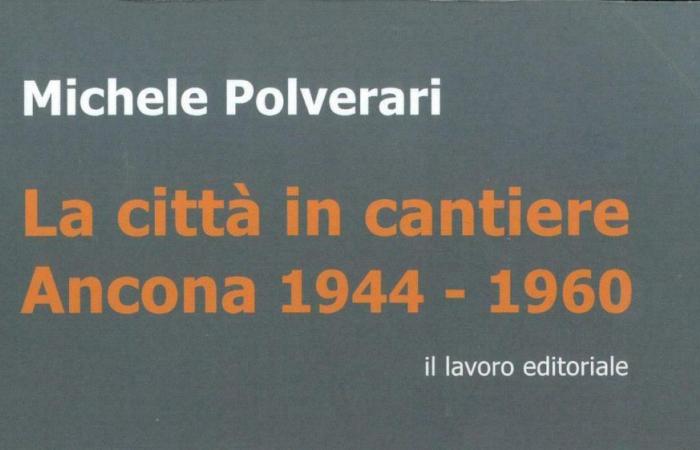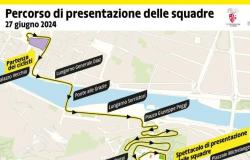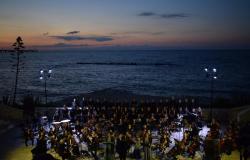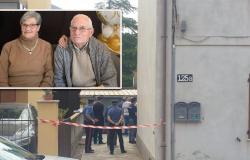
Michele Polverari, unforgettable director of the municipal art gallery and curator of the Museum of the city of Ancona, is among the experts of reference for the past and recent history of the city, not only for his qualification as an accredited art historian, but for his recurring appeal on the written page or as a timely speaker of events, especially local events, political, economic, social, but above all cultural events.
The last work
His latest product published by “illavoro editorial” is a book of singular and innovative conception: it is entitled “The city in construction – Ancona 1944-1960” and is an anthological chronicle of the salient events concerning the city over the period of time considered and summarized through the use of newspaper or magazine clippings with the visual support of the relevant period photos. This is an exercise positively experienced by the author, compared to an everyday life of the past marked by the supporting pieces of the press which leads us along the paths of a memory, which for many is certainly still alive. We remember for example the Adriatic Song Festival of 1959 at the Fiera della Pesca, where the young Adriano Celentano won with the song “Your kiss is like a rock”.
The symbolic date
The book is divided into two parts: the first, of about forty pages, collects a lucid analysis of the events of those years also open to specific considerations; the second is the news year after year. Polverari’s excursus begins at the end of the war, with the symbolic date of the city’s return to the Italian administration, 4 August 1945. Ancona, after the terrible Allied bombings of ’43, was reduced to rubble. The historic core overlooking the port no longer exists. The return of the Ancona residents is made dramatic by the difficult housing situation, many families have to adapt to cohabitation. The reconstruction starts again amidst a thousand difficulties and lasts for years. The dramatic episode of the bombs thrown on January 9, 1955 among the spectators of the Metropolitan cinema by the Marshal of the Guardia di Finanza Michele Cannarozzo, exasperated at not having obtained the assignment of a home and forced to live with his family in a basement damp and smelly, it indirectly says a lot about the persistence ten years later of a still unsolved housing precariousness.
The role of the Republicans
The politics of those years plays an important role in the journalistic clippings that make up the text: the skirmishes between the DC and the PCI, the important role of the Republican Party in Ancona, attested by the figures of the mayor Marsigliani first (’46-48), then of mayor Francesco Angelini, in office from ’49 to ’64, the year of his death. Then Archbishop Egidio Bignamini and Minister Fernando Tambroni, who generously provided funding for the productive activities of Ancona, can also boast the merit of having contributed significantly to the opening of the Experimental Theater in 1960: with which creative enthusiasm was rewarded of his artistic mentor, the engineer Lirio Arena (with his companion Antonio Fazi), director and actor of undoubted value. In the extracts in particular from our newspaper, then Voce Adriatica, the events of the port and the Cantieri Navali (with the launching of the Fassio oil tanker), the Fiera della Pesca (the pride of those years) with its open-air theater flow to host the opera and prose seasons, where the great Beniamino Gigli, in the summer of ’54, was able to once again delight the public in Verdi’s “Forza del Destino”. And also the opening of the University (branch of Urbino), of the Centrale del Latte, of the Galleria del Risorgimento, of the Passetto elevators.
The flashes on the news
The timely flashes on the news of artistic events, entertainment and its protagonists fuel the reading pleasure of rediscovering almost a distant memory: the flood of September ’59, the robbery in Via Osoppo in Milan in which Enrico from Ancona took part Cesaroni, the sentimental story of Fausto Coppi and the “white lady” Giulia Occhini, the Giro d’Italia which passes repeatedly through Ancona and the 55th Mille Miglia with the victory of the legendary Stirling Moss, but also the tragic death while racing on motorcycle of the Ancona champion Giuseppe Lattanzi. Then the constantly updated formations of Anconitana which played in Serie B for just one year (1950-51 season), the theatrical successes, at La Scala and elsewhere, of the great Franco Corelli. Weighing the pros and cons of those years of the city’s rebirth, Polverari notes at the end of his comment: «Much was done. Even if not everything was good, and not everything was beautiful. To the people of Ancona the glass appeared half full”
© ALL RIGHTS RESERVED
Read the full article at
Adriatic Courier





